With its aged champagne-green finish and its outburst of shimmering lugwork, the bicycle was lovely enough in its own right - to admire, to ride, and to photograph. The beautifully proportioned English "lightweight" - a BSA Gold Column - was built not long after the Second World War. And, by the look of it, it was well ridden and well appreciated by previous owners.
But it wasn't for its looks or pedigree that I'd been brought to this undisclosed location specifically to see the old machine. And as I stood now before Aaron its keeper asking "Are you
sure you want me to ride it?" I knew I was about to try something few even knew existed. I certainly hadn't, until a couple of hours prior.
Earlier, in the basement of the
Three Speed Hub, Nick chattily sifts through piles of rare old bike parts with the air of a person accustomed to sights that might make other vintage enthusiasts faint. Casually he pushes aside stacks of NOS Bluemel fenders, boxes of jewel-like quadrant shifters, heaps of full chaincases polished to an obscene sheen. Absentmindedly he toys with springs of Brooks saddles with model names I'd never heard of. But none of these things are what he wants to show me, and his search continues until he retrieves a small gleaming object from a back drawer. "Ever heard of these?…" It's a BSA hub. A nice, shiny one too. But okay …so what?
Nick flips the hub over to reveal the inscription "DP." He searches my face for traces of recognition, and seems all the more pleased when none is forthcoming. "You've heard of the Sturmey Archer ASC hub yeah?" (English accent, conspiratorial smile...)
"The vintage 3-speed fixed? Sure. And I've tried the modern remake,
the S3X."
"Right. Well in the '30s, BSA made a 2-speed fixed hub…"
"Oh?"
"…the Dual Purpose. And you know why it was called that?"
"Why?"
"Because this…" (pulls on the indicator chain on one side) "controls the speeds, and, you see
this…" And as he tugs at the chain on the other side, I suddenly know, incredible as it is, the punch line that is coming... "switches from freewheel to fixed and vice versa."
Bang! There it was. Mind blown.
For several long seconds the basement is silent. And then: "These hubs are very rare. But my friend's got another one and it's built into a bike. Do you want to try it?" And soon we're en route to the BSA Gold Column.
Under the still-wintry Belmont sky I shiver with cold and trepidation as I approach this most unusual of machines.
The saddle height fits me with chilling precision, the reach suits me nicely. I have been shown how to operate the hub and sent on my way. The BSA's owner seems dangerously trusting of my good intentions and bike handling skills, and this instills in me a keen sense of responsibility as I eye the busy road on which I am to cycle.
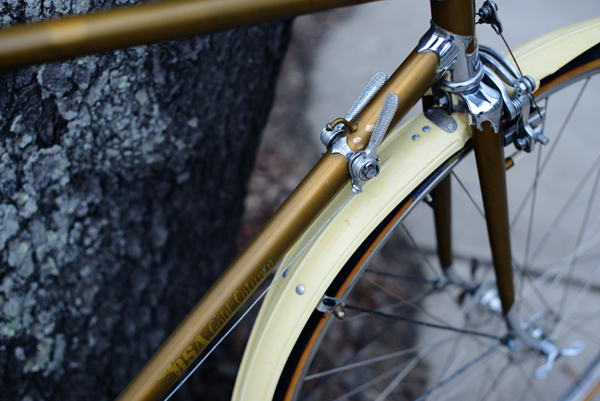
The downtube shifters look so innocently normal. The right one switches from first gear to second. The left one switches the drivetrain from freewheel mode to fixed. I start off in free and push off. The gear is nice and easy, and with a flick of the right lever, I make it higher, than lower again. So far it is an ordinary vintage roadbike experience - with the exception that, as I soon discover, once the bike is in motion I haven't adequate hand strength to activate the front (and only) brake. As unpanickingly as possible, I slow down, then shift into fixed mode and brake with my feet. The smoothness with which I am able to carry out this operation surprises me, and I continue down the road (which, blessedly, has a bike lane) switching from fixed to free to fixed to free again. This is not as disconcerting as I expect. At the slow speed I am going, there is an ever so slight jolt during the free-to-fixed transition and an equally subtle sensation of "being let go of" (not unlike
a glider at the moment it disconnects from a tug plane…) when switching from fixed to free. But that is all, and the transitions are very smooth.
Riding the bike in fixed mode, shifting gears feels equally smooth and natural. And in neither first not second gear do I experience the off-putting "dead spot" sensation like I do whenever I try the modern S3X.
The awe-inducing rarity of the DP hub and the lack of a functional front brake make me too nervous to truly enjoy riding this bicycle. But the experience is memorable enough so that the following night I dream of riding the BSA again - this time in the countryside, at great speeds, switching between gears and fixed/free modes with abandon. If these hubs were more common, how great would it be to set up
my Mercian with one.
But common they are not. Produced
from the mid-1930s through WWII and discontinued shortly after, the BSA Dual Purpose hub is one of the rarest, most holy-grailest hubs out there. Its discontinuation is all the more mysterious and disappointing considering the glowing praise of its performance from riders who have owned it.
"This hub is so good," says Nick, "someone should really do a kickstarter campaign to get them manufactured again." Nothing is impossible. But it's unlikely. The BSA DP hub is a piece of bike lore so obscure that few will ever hear of it. How improbable and delightful to have experienced one in action.

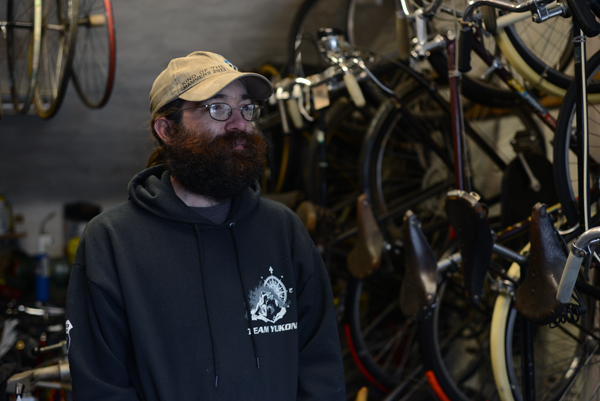
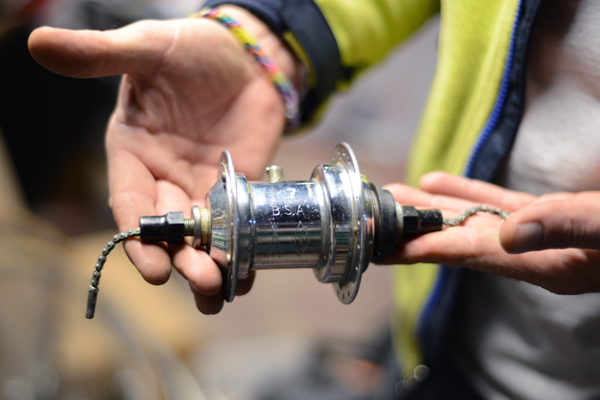
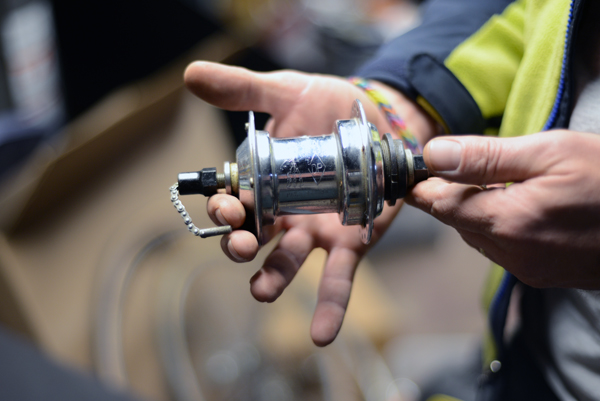

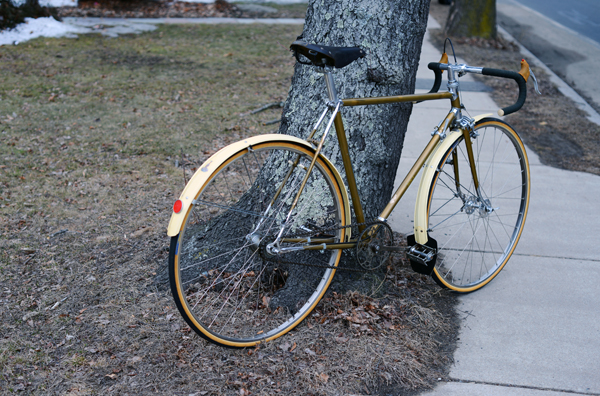

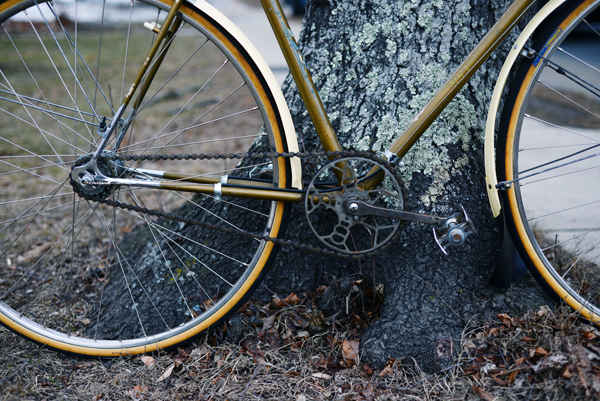
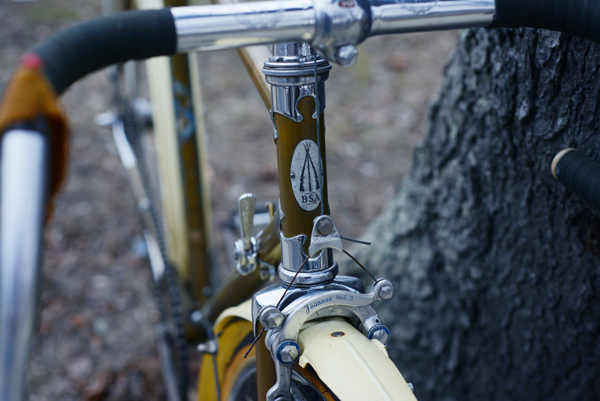
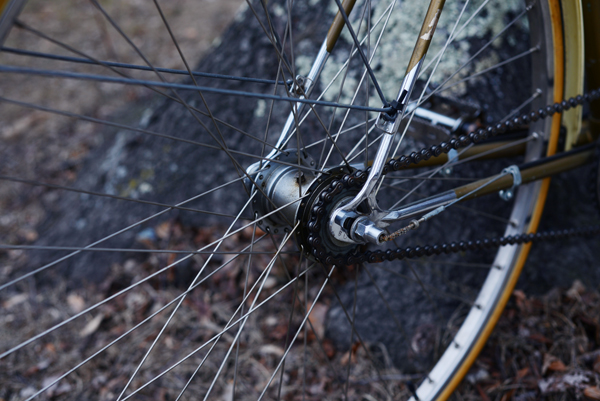




0 comments:
Post a Comment